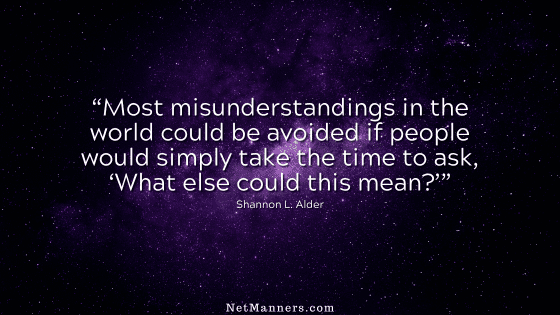Email Requires Your Full Attention!

Occasionally, I get to do interviews about email etiquette topics. The questions I get asked are generally the same. Most are about the issues that arise when those involved are not paying attention to details.
One interview, in particular, covered a widespread occurrence of emailers not paying attention. This interview was due to a big hullabaloo about one of the NFL’s coaches who wasn’t paying attention. Maybe you remember that story.
Email @ Work
Who just forwards without double-checking the To: field? This happens quite a bit. It sounds like these teams need an email policy in place. I bet they probably have one in place, but it isn’t read, adhered to, or enforced until something like this happens.
Bet there will now be a sit down with all their personnel, as there should be. This is the only way to ensure everyone knows the guidelines and what is expected of them.
This coach was in some major hot water. There were even calls for him to be fired.
But he didn’t create the list!
One of the first questions I was asked in the interview was how he could have prevented this. After all, he didn’t create the list. So, for example, how can he see who is on the list he is sending to? That’s a poor excuse.
If you are provided a list of folks for specific communications, you’d better be careful what you use that list for. He didn’t notice he had clicked and added that list to his email.
The primary way to avoid this kind of thing from happening besides paying attention is to only use email for work-specific emails while at work! Simple.
The thing is, I see folks do this with personal lists of contacts too. They inadvertently share something confidential with the list or, worse, details about someone on that list that they didn’t know was on the list. That’s called eGossiping.
As far as who is on his list? Well, if you aren’t sure who is on a list, don’t use it until you can clarify those details. In most cases, you can view who is on a list anytime. That is if you take the time and are so inclined.
Why am I sharing this story with you today?
Because, believe it or not, this happens every day. Once again, we have someone on business time, using business resources and sending suspicious emails.
Worse yet, they are not paying attention to what they are doing! (If you missed it, I wrote about NSFW [Not Safe For Work] emails on my Business Email Etiquette Blog here.)
People in a hurry click a button to forward (or reply to all) and then Send. A nanosecond too late, they realize their email went not to the intended party(s) but to someone else. All too often, someone, the sender, didn’t want to view that email’s contents.
Just Stop It!
When it comes to forwarding emails — stop! Don’t forward if you can’t take the time to write a personal comment about why you are forwarding it to a specific person, don’t forward it. No more sending to lists of contacts who didn’t ask to be on your “forward to everyone you know” list.
If you are a habitual forwarder or know one, two, or ten, stop now and read the following article and “Share” to notify others with this uncontrollable behavior to do the same.
Read my article 5 Rules of Forwarding Emails.
Slow down, take your time, and for goodness sake, pay attention to which buttons you click. Review the To: field, BCc: and Cc: fields to ensure you are sending to who you intend. Before you click Send.
If you don’t, I hope you like the taste of humble pie.






